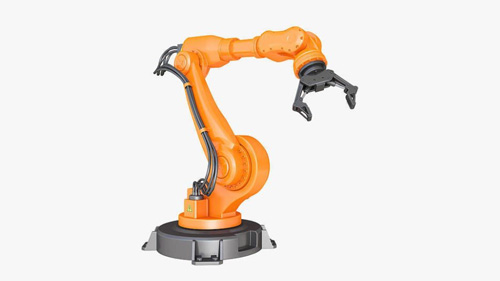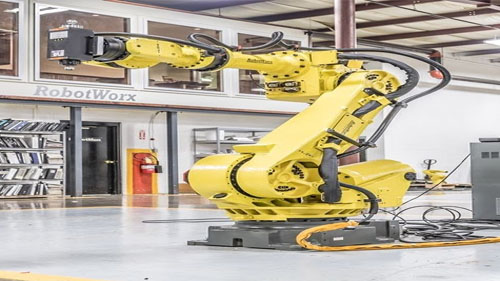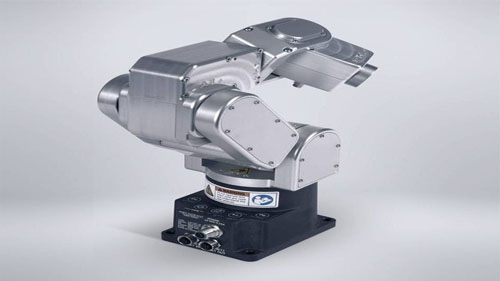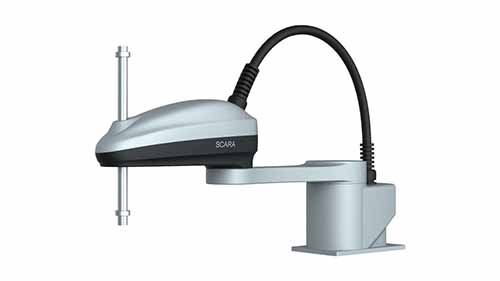There are many parts that make up a robot. The robotic arm area is the most prominent and what people see. It is also the part that handles most of the work. But there is another rarely noticed part that does most of the heavy lifting in the background, and that is the envelope.
We are going to look into what an envelope is, why they are important, the types of robot work envelopes in use in manufacturing today, and the benefits they bring to the table. Stick around to the end to gain more knowledge on robotic applications.
What Is a Work Envelope?

Source: Pinterest
A work envelope is a robot’s range of movement. Industrial robots don’t come with legs or wheels for movement. Costs are fixed in one place, and that base that holds them and grants them stability is called the work envelope. It is the shape that’s created when the robotic manipulator moves around in all directions to handle a task. The maximum distance that can be reached by the robot is determined by the size of the work envelope.
What this means, in a nutshell, is that the robot can only perform within the confines of the work envelope. You could grant the robotic arm all the flexibility in the world, but the most it can do depends on the work envelope. The only robot that has the ability to oppose the rules of the work envelope is the gantry robot. Work envelopes have to be carefully designed for the robotic arm to stand a chance of functioning as expected.
Why Are Work Envelopes Important?

Source: Pinterest
A work envelope acts as a leash to the robotic arm. It defines the area that the robotic arm is allowed to reach. This can come in handy when there are human beings working alongside the robots since it creates a safe zone that reduces the chances of any injury happening on the floor of the factory. When choosing an industrial robot for your plant, you ought to pay close attention to the envelope type and size because everything you chose to do with the robot will be at the mercy of the envelope.
If you want a robot that covers as much space as possible, then go for the one that comes with a bigger work envelope. But that will again bring up a new issue to do with space. Bigger work envelopes usually translate to bigger machines, and if you lack the space for that, things will not work out even the way you want.
Types of Robot Work Envelopes

Source: Pinterest
There are about 7 standard types of robot work envelopes that are used across the manufacturing industry. Each has its own defined shape and design that is suited for a specific type of job. They include the following.
Cartesian Work Envelope: This is an envelope of the Cartesian configuration, and it comes in the form of a rectangular prism. It doesn’t have any dead zones in and around the work envelope, and the robot using this envelope has the freedom to manipulate the maximum payload it can handle without feeling any strain. This is the kind of work envelope that you will find in Cartesian or Gantry robots.
Cylindrical Work Envelope: As the name suggests, this is a cylindrically shaped configuration that has a hollow center that severely limits the robotic arm that can stretch and retract. This structure creates a significant dead zone within and around the robot structure. The kinds of robots that use this type of envelope are suited for quick small tasks that don’t require a lot of movement.
Polar Work Envelope: This is a configuration that sweeps up the volume located between two partial spheres. This design limits the maximum angular movements that the robotic arm can make across the vertical and horizontal planes. These physical restrictions have the unfortunate effect of creating huge significant dead zones below and above the robot in question. This is the kind of
work envelope you are likely to find in a Polar robot.
Revolute Work Envelope: This is a unique configuration that usually has an envelope that is bigger than the floor space available. In a nutshell, the robotic arm stands on a very huge and wide work envelope that can either be a complete sphere or a partially opened one. It is one of the most complicated configurations as far as work envelopes go.
SCARA Work Envelope: This is a configuration unique to SCARA robots and is usually shaped like a heart or a kidney. It has a prominent hollow circle that passes right through the middle, and this allows a very large horizontal plane of operation, making lateral movements easier. However, there’s very little space left going up, and this limits vertical movements.
Spine Work Envelope: This is the simplest work envelope you will ever come across. It is simply made up of a spine robot within a semi-sphere work envelope that provides just enough space for the robotic arm to operate as it wants in any direction. The size of the entire structure relies on the number of articulations found in the spine.
Pendulum Configuration: This is a configuration that almost resembles a horseshoe with a segmented cross-section. The working envelope is a little limited, but the advantage of this design is that the robot in question can be mounted on the work envelope in any position that’s convenient for the task at hand. This gives the envelope the freedom to be positioned in the most convenient location that’s prime for the best efficiency.
Interpreting the Working Envelope

As we have clearly established, each work envelope has a complex design that generates varying characteristics that define the exact function they are suited for. However, this doesn’t mean you could go around choosing the first work envelope that you see in front of you. You have to exercise caution when it comes to interpreting the working envelope of a robot, and the following are the reasons why this is vital.
You have to be aware that the envelope, in this case, represents the working volume that can be reached by the arm of the robot. You have to know where this point is located, and in most cases, it is at the center of the mounting plate in the end effector. This effectively excludes all the tools that the end effector may be holding.
You have to be aware that there are areas within the work envelope that cannot be reached at all by the robotic arm. These are the dead zones, and there’s nothing you can do to change the situation.
The maximum payload capacity that’s quoted is only achievable within certain arm spans, which should not be confused or regarded as the maximum reach.
Conclusion
Work Envelopes are essential for the functioning of a robotic arm and any other machine. They play a huge role in deciding the shape and design of the robotic arm. These seven types are used widely across the globe, but there are probably other new variations being made that are yet to go mainstream. For more information on work envelopes and how they can be tweaked for better performance, check out our website and have all the questions you may have answered.

 Arabic
Arabic Bulgarian
Bulgarian Czech
Czech Dutch
Dutch English
English Finnish
Finnish French
French Georgian
Georgian German
German Greek
Greek Hungarian
Hungarian Italian
Italian Japanese
Japanese Korean
Korean Lithuanian
Lithuanian Myanmar (Burmese)
Myanmar (Burmese) Persian
Persian Polish
Polish Portuguese
Portuguese Romanian
Romanian Russian
Russian Serbian
Serbian Slovak
Slovak Spanish
Spanish Swedish
Swedish Thai
Thai Turkish
Turkish Ukrainian
Ukrainian Vietnamese
Vietnamese